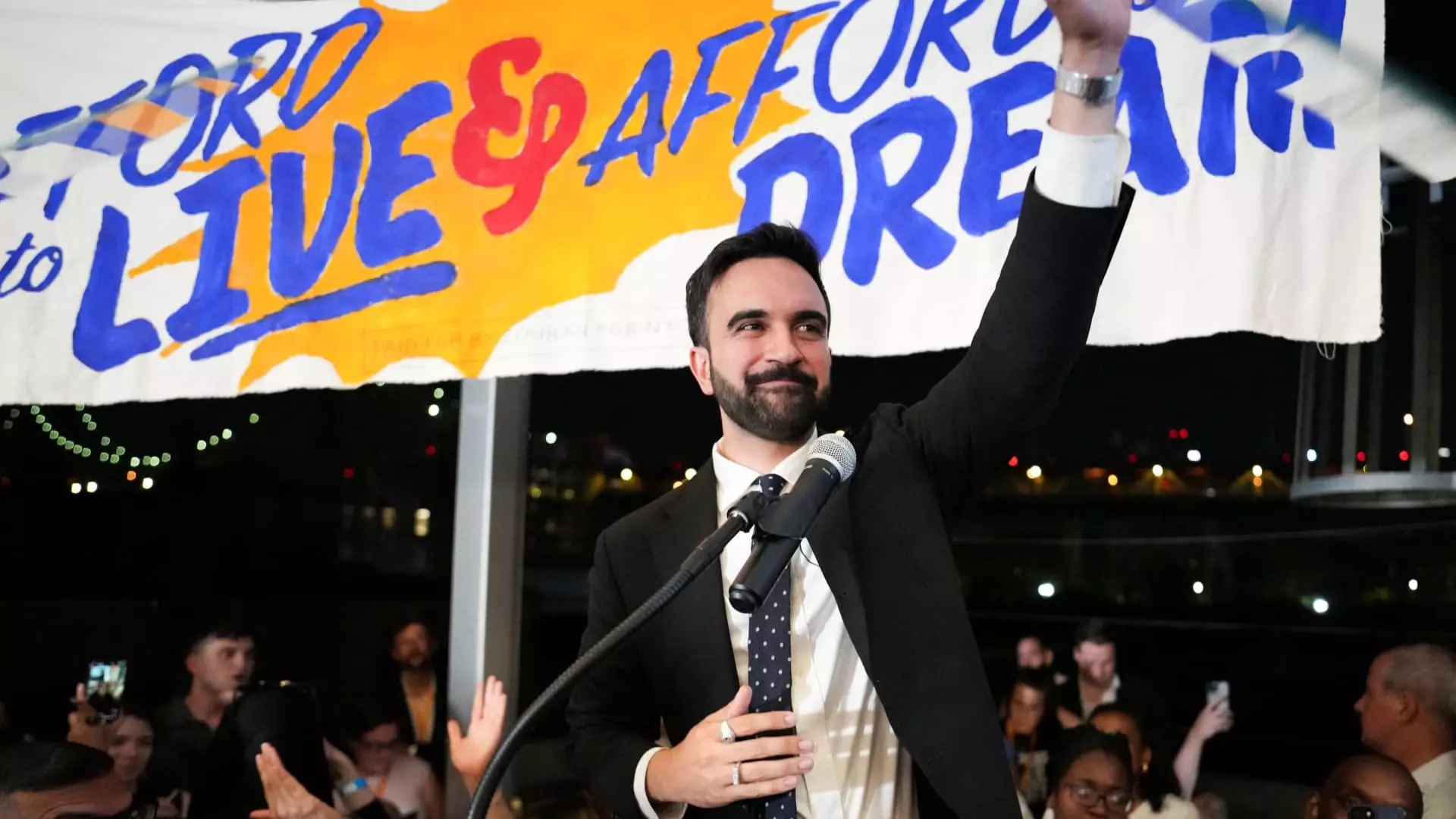In recent years, the discourse surrounding New York City’s economic vitality has become increasingly polarized, with a growing chorus of voices heralding an imminent exodus of the wealthy. Critics argue that proposals like Zohran Mamdani’s “millionaire tax” threaten to accelerate the departure of high earners, potentially hollowing out the city’s economic core. Yet, beneath the surface of alarmist headlines lies a complex reality: New York’s formidable reputation as a magnet for global wealth remains intact. Fluctuations in millionaire populations and the real estate market are often misinterpreted as harbingers of doom, but a deeper examination reveals resilience rooted in undeniable economic fundamentals, cultural allure, and strategic adaptability.
A notable flaw in the current narrative is the tendency to equate individual billionaire relocations with systemic decline. While high-profile stories of elites fleeing to Florida generate sensationalism, they obscure the broader economic landscape—one in which wealth continues to flow into New York in substantial numbers. The city’s ability to attract new millionaires and sustain its position as a global financial hub demonstrates that the picture is far more nuanced than the headline-grabbing stories suggest. Moreover, recent data indicates that New York’s affluent population is not only rebounding from pandemic setbacks but also expanding at a pace that defies simplistic assumptions of mass migration.
Tax Policies: A Double-Edged Sword or a Misleading Threat?
The debate over the proposed “millionaire tax” deserves meticulous scrutiny. Critics have argued that soaring tax burdens could incentivize high earners to leave the city, taking their wealth—and crucial revenue streams—with them. It’s a compelling argument on the surface, especially given the elevated combined tax rate of nearly 54% when federal, state, and local levies are combined. However, the reality is more complicated. High earners are motivated by factors far beyond tax rates: lifestyle, proximity to cultural institutions, social networks, and economic opportunities.
Furthermore, the limits of municipal taxation are often overlooked. The city’s inability to directly tax non-resident workers means that wealthy individuals with homes outside the five boroughs can maintain their city residences while residing in neighboring counties or states with lower taxes. This legal and logistical reality substantially weakens the argument that higher city taxes alone will provoke mass emigration. Instead, it suggests a more strategic migration—high earners can and will choose their residencies based on a spectrum of factors, not just tax burdens.
Nevertheless, the fear resonates because it taps into a broader truth: high taxes can influence economic behavior, especially when combined with perception and political stability. The challenge for New York is balancing fiscal prudence with its historic role as a sanctuary for the upper class. An overreach in taxation risks undermining that delicate equilibrium, but it does not necessarily spell collapse.
Economic Resilience and the Myth of an Outbound Exodus
The notion that a single election or policy proposal could fundamentally drain New York’s wealth disregards the city’s resilient, regenerative economic ecosystem. The data speak volumes: despite fluctuating millionaire numbers, New York continues attracting new high-net-worth individuals at a substantial rate. According to Altrata’s reports, the millionaire population in NYC has more than doubled over the past decade, surging past 2.4 million. The ranks of ultra-high-net-worth individuals—those with assets exceeding $30 million—have also swelled, outpacing competitors like Miami.
This resilience emerges from a potent economic foundation: finance, media, technology, and cultural industries form a diversified backbone that sustains its wealth-creating capacity. Luxury real estate markets remain robust, with high-value transactions consistently setting new records. The fact that new luxury developments and record-breaking apartment sales prosper even amid political debates underscores an intrinsic strength: New York’s appeal extends beyond purely monetary considerations. The city’s skyline, cultural vibrancy, and educational institutions continue to draw the world’s elite, regardless of tax policy debates.
Critics often overlook the city’s rapid capacity for mass reentry after pandemic disruptions, with high-income households rebounding faster than most other groups. While some wealthy individuals do relocate to neighboring states, the broader picture reveals a city that’s constantly replenishing its ranks of affluent residents. The perceived “wealth flight” is, in many respects, a myth—an overgeneralization that ignores the complex migration patterns driven more by lifestyle choices than taxation alone.
Is the Future of New York City Really at Risk?
At its core, the narrative of an impending wealth exodus tends to serve a political purpose—stoking fears to resist progressive tax reforms. Yet, empirical evidence suggests that these fears are exaggerated. The choices of high-income households often lie on a continuum influenced by broader socio-economic factors: education, infrastructure, public safety, and cultural offerings. While taxation plays a role, it is seldom the decisive factor.
Even with proposed policies like Mamdani’s rent control measures, opponents have rallied to fund candidates opposing these initiatives, highlighting a political landscape that recognizes the importance of balancing social equity with economic vitality. The city’s economic vitality is not solely dependent on a handful of billionaires but on the continuous inflow and development of a diversified, resilient elite.
In the end, New York’s wealth is deeply embedded in its global reputation, its unique blend of culture, business, and opportunity. While policy decisions may influence short-term migration patterns, they are unlikely to unravel the city’s fundamental magnetism or its capacity to rebound—and indeed thrive—against challenges that might seem insurmountable to outsiders. This resilience, rooted in history and driven by an enduring appeal, suggests that the narrative of wealth flight is far less certain than critics proclaim.

